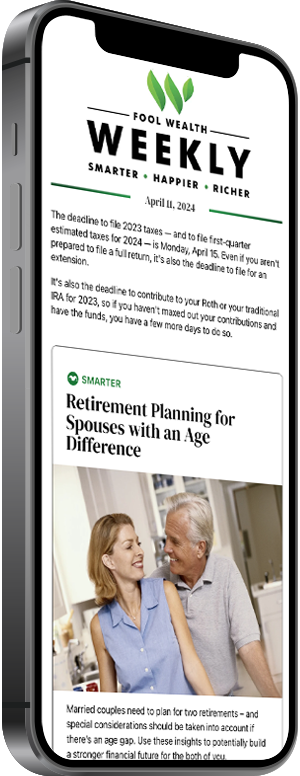Over the past five years, the average premium for property insurance, including homeowners insurance, has risen more than 30%. Those who’ve seen the highest increases live, not coincidentally, in areas most prone to natural disasters like hurricanes and wildfires.1
But how, exactly, do insurance rates correlate to natural disasters? Do increases impact everyone, or just those living in disaster-prone areas? And perhaps most importantly, what can you do as a homeowner to make your premiums more manageable?
Let’s explore.
Understanding “reinsurance”
You essentially “transfer” the risk of owning a home to your homeowner’s insurance company. Should a qualifying event occur (theft, fire, etc.) that’s covered under your policy, your insurance company will be one to pay for repairs—after you chip in for the deductible.
While you’re likely familiar with the basics of how homeowners insurance works, did you know that insurance companies have their own insurance policies as well? This is called reinsurance, and, put simply, it’s insurance for your insurer.
When a catastrophic event occurs, like wildfires or hurricanes, the resulting damages can cost insurers billions of dollars. Without reinsurance, a single natural disaster could wipe out the original insurer’s funds or otherwise greatly diminish its ability to be profitable. That’s when the insurer will file a claim with its reinsurance, which offers additional cash reserves to help cover the funds owed to impacted policyholders.
Who’s impacted by rising rates caused by natural disasters?
Your insurance company operates by pooling risk. The general gist is that all policyholders pay premiums, and each year the company pays out to a few people who experienced major damage. But because the majority of payers don’t need payouts each year, the company stays profitable.
Here’s the problem: Natural disasters are becoming more frequent. In 2023, we experienced 28 natural disasters, each resulting in over $1 billion of damages—a new record.2
When insurers are forced to pay out more to policyholders, they require more from their reinsurers, who in turn, raise their rates. And who shares the burden of higher rates? Policyholders everywhere, including those living in areas less prone to such catastrophic disasters.
While the increased cost of reinsurance has raised premiums across the nation, it may not be the only contributing factor. Other likely causes include high inflation, rising home prices, and an increase in building materials and labor costs.2
5 tips for addressing rising costs
While homeowners may not have the ability to address the external factors influencing their premium rates, there are a few steps they can take to manage (and possibly lower) the rising costs of premiums.
#1: Consider whether bundling policies is right for you
Insurers claim consumers can achieve significant savings (upwards of 20%) by bundling policies together—most often this applies to home and auto coverage.3 If you don’t currently bundle, it may be worth looking into what sort of savings are available by providers in your area.
On one hand, bundling can not only help you unlock provider discounts, but it makes the process of managing your policies easier. Most large providers give policyholders access to file claims, download statements, and pay premiums directly from an app.
On the other hand, bundling may not be for everyone. Those living in high-risk areas prone to natural disasters, for example, may not enjoy the same rate of savings as those in other areas of the country.3 A bundled policy option also may not provide adequate coverage, meaning additional policies would still be necessary.
Another concern? Consumers may feel less compelled to shop around for carriers, since changing multiple policies may feel more burdensome.
#2: Switch carriers (if possible)
This brings us to tip number two—if you feel you’re paying too much for your current coverage, shop around! The big caveat here? Depending on where you live and how high-risk your region is considered to be, you may have limited options. However, it never hurts to obtain a few quotes from carriers, including both small, local insurers and large, well-known carriers.
If you’re not sure where to start, contact your state’s insurance department. They should be able to help you determine which providers offer coverage in your area, or direct you to other resources for more information.
#3: Opt for a higher deductible
The thing about insurance is… they either get you coming or going. Generally speaking, you have two options (assuming you want to maintain the same level of coverage). You can either (A) pay more per month and enjoy a lower deductible should an incident occur, or (B) pay less per month and assume a higher deductible.
Of course, it’s impossible to predict the future, so that makes it difficult to tell which option will be the most cost-effective in the long run. However, if your primary concern is reducing your monthly premiums (without reducing your coverage), opting for a higher deductible might make sense.
If you do decide to go this route, consider setting aside enough in an emergency fund to cover the deductible, plus extra for expenses like a hotel stay, gas or travel, food, etc. You should be able to easily access these funds from anywhere in the event you’re forced to evacuate your home quickly (meaning an envelope under the mattress isn’t going to cut it).
#4: Improve your credit score
Your credit score and history might impact whether you are offered homeowners insurance and how much your premiums will be—though insurers are typically not allowed to deny you based solely on your credit score (this rule varies by state).4
This is called “credit-based insurance scoring” and it’s allowed in every state except the following:4
- California
- Hawaii
- Maryland
- Massachusetts
- Michigan
- Nevada
- Oregon
- Utah
Most of us don’t have a perfect credit score, meaning there’s likely room for improvement with your rate. While it may not be the greatest factor impacting your policy premiums, raising your credit score over time could help with lowering policy quotes in the future.
Insurance aside, a high credit score can improve other aspects of your financial life as well, including loan terms, approval odds, and more.
#5: Make additions or improvements to your home (and tell your insurer!)
Contact your insurance company to find out what improvements could help you save on monthly premiums. If you’re in a high-risk area, for example, you may want to consider disaster-proofing your home with storm shutters, a new roof, impact-resistant windows, reinforced garage doors, and other upgrades.
Other common home improvements or additions include:
- A sump pump for the basement
- Automatic water shut-off valves
- Monitored burglary alarm
- Updated electrical, water heater, plumbing, HVAC, etc.
- Smoke detectors
- Smart home detectors (gas leak detectors, pipe freeze detectors, leak detectors, etc.)
Again, if and what improvements make a difference in your premiums will vary by provider and state—but you should be able to contact your insurer to find out which upgrades will make the most impact.
Adjusting your financial life to accommodate rising homeowners insurance rates
Paying more in policy premiums is not just a headache; it impacts your entire financial picture. The more you’re required to spend on necessities like homeowners insurance, the less you have to put toward your savings goals, paying down debt, or other financial priorities.
While rates may continue rising due to external factors that remain out of homeowners’ control, some of these opportunities may help you manage or lower your monthly premiums over time.

Like what you're reading?
Join the thousands of readers getting stories like this delivered straight to their inbox every Thursday — for free. Give it a spin, enter your email to sign up.
Sources:
1 “Disaster Risk and Rising Home Insurance Premiums.” National Bureau of Economic Research. October 1, 2024. Accessed February 18, 2025.
2 “Rising Insurance Costs and the Impact on Housing Affordability.” Bipartisan Policy Center. June 25, 2024. Accessed February 18, 2025.
3 “Should You Bundle Your Home and Auto Insurance?” Experian. April 15, 2024. Accessed February 18, 2025.
4 “Which States Restrict the Use of Credit Scores in Determining Insurance Rates?” Experian. January 12, 2024. Accessed February 18, 2025.
Related Articles

How to Deal with Debt Stress
Debt is one of those four-letter words many consumers would rather avoid talking about altogether....

5 Special Tax Breaks for Seniors
While life can certainly feel a little easier and more relaxed in retirement, there’s one thing...

Wealth and Financial Planning for the Self-Employed
According to the Bureau of Labor Statistics, over 16.7 million people were classified as...
